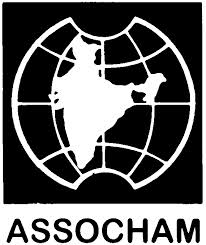Apex industry body ASSOCHAM today called on the Minister for Commerce and Industry, Ms Nirmala Sitharaman and submitted a memorandum while strongly suggesting the new regime to impose 30 per cent export duty on iron ore pellets in interest of the domestic steel industry.
“As the export of iron ore pellets rose to a whopping 1.5 million tons (MT) in fiscal year (FY) 2013-14 as against nil in FY 2012-13, we have urged the Centre for levying export duty on iron ore pellets as in the case of iron ore fines and lumps in order to ensure iron ore security to India’s steel industry,” said the senior ASSOCHAM Managing Committee member, Mr Ravi Wig who led the chamber’s delegation.
“Presently, iron ore pellet attracts zero duty while the duty on iron ore (lumps and fines) export is 30 per cent, therefore exporters are circumventing iron ore pellets’ exports by paying only five per cent export duty,” highlighted The Associated Chambers of Commerce and Industry of India (ASSOCHAM) in a communication addressed to Commerce and Industry Minister.
Iron ore production in India has fallen significantly during the course of past few years i.e. from a level of 218 MT in 2009-10 to only 144 MT in 2013-14 which is further expected to drop to 100 MT in FY 2014-15 against the demand of 140 MT. “The drop in iron ore production is due to reduced or no production of iron ore from states like Goa, Karnataka and Odisha after the ban imposed by the Supreme Court.”
As such, ASSOCHAM has suggested the Government to maintain 30 per cent duty on export of iron ore (lumps and fines) till the time iron ore shortage situation in India normalises.
At a meeting convened by the Commerce Ministry last week (June 5, 2014), ASSOCHAM had also suggested the government to reduce the import duty on iron ore (lumps, fines and pellets) to zero from the currently levied 2.5 per cent. “This shall help rectify this anomaly in the duty structure and safeguard the competitiveness of domestic steel industry.”
The apex chamber had also pitched for halting iron ore exports by state-run National Mineral Development Corporation (NMDC) till the time present scenario normalises.
“Exports of iron ore pellets is not only draining India’s mineral wealth but is also causing significant revenue loss to the country as pellets attract only five per cent export duty whereas it is 30 per cent in case of iron ore exports,” said ASSOCHAM secretary general, Mr D.S. Rawat.
“It is both surprising and unfortunate to note that despite severe iron ore shortage, India exported 14 MT iron ore in the last fiscal, mainly in the form of pellets,” said Mr Rawat. “Besides, value addition in case of pellets is merely 20 per cent as against 500 per cent in case of steel.”
“Therefore, export of steel is a better value proposition for India as it not just adds extra value to the raw material but creates new employment avenues and generates revenue,” he added.
Quashing the recent reports about 120 MT approx. iron ore stocks being available in India in different states, ASSOCHAM termed it as a myth and misrepresentation of facts. “Even the iron ore prices in India have escalated by 20-25 per cent while globally prices have decreased by up to 30 per cent since April 2013.”
Due to unavailability of iron ore, there has been a sharp decline in steel capacity utilization which declined to 77 per cent in FY 2013-14 from 88 per cent in 2010-11, moreover, India imported 5.7 MT steel in FY 2013-14 to fulfil the domestic requirement.
“There is a strict need to conserve this exhaustible natural resource which is available in limited quantity instead of exporting it to achieve the target of 300 MT crude steel capacity by 2025 set by the
high level working group,” further noted ASSOCHAM.
ASSOCHAM has also highlighted sluggish performance of domestic steel industry during the course of past 4-5 years due to factors like poor availability of key raw material of iron ore, high raw material prices and delay in statutory clearances.
Besides, India is lagging far behind the world in terms of per-capita steel consumption which stood at 59 kilograms (kg) in FY 2012 in India as against global average of 217 kg. “This suggests strong headroom for growth for Indian steel industry, therefore more development work needs to be planned to boost the steel consumption to reach the level of average global apparent steel use.”

